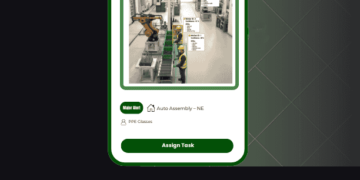When the monsoon season arrives, industries, construction sites, warehouses, and even households face one major challenge: protecting valuable materials and machinery from heavy rain, moisture, and humidity. One of the most cost-effective and practical solutions is to build temporary monsoon sheds.
These sheds are quick to install, reusable, and sturdy enough to withstand weeks or even months of rain. But what exactly goes into building a reliable monsoon shed? Let’s take a closer look at the key materials used in creating these rain-ready structures.
1. Tarpaulin Sheets
At the heart of any monsoon shed is a high-quality tarpaulin cover. This waterproof and UV-resistant fabric is essential for keeping water out and providing a protective roof or wall for the temporary structure.
Features of Tarpaulin:
- Waterproof and UV-resistant
- Available in various thicknesses and colors
- Durable and long-lasting
- Easy to install and remove
Tarpaulin sheets made from PVC or HDPE (high-density polyethylene) are the most preferred due to their strength and weather resistance. These sheets cover the entire structure and ensure that the space underneath remains dry.
2. MS (Mild Steel) or GI Pipes
The framework of a monsoon shed needs to be solid enough to handle wind, rain, and the weight of tarpaulin sheets. That’s where mild steel (MS) pipes or galvanized iron (GI) pipes come in. These pipes act as the skeleton of the shed, forming the structural support for the tarpaulin to rest on.
Why Use Steel or GI Pipes?
- High strength and durability
- Corrosion-resistant when galvanized
- Reusable for multiple monsoon seasons
- Easy to fabricate and assemble on-site
Contractors use varying pipe diameters depending on the size and height of the shed. Welded or clamped joints are used to ensure stability during strong winds and heavy rains.
3. Bamboo or Wooden Supports (Economical Alternative)
For projects on a tighter budget, bamboo or treated wooden poles are also used as vertical and horizontal supports. While not as long-lasting as steel, they are:
- Affordable
- Locally available
- Easy to work with
Bamboo sheds are commonly used in rural or semi-urban settings and can be quite sturdy when tied and braced properly.
4. Binding Materials (Ropes, Wires, Fasteners)
To fix the tarpaulin sheets and secure the structure, a variety of binding tools are used:
- Nylon ropes – to tie tarpaulin to the framework
- Steel wires – to hold structural joints tightly
- Cable ties and hooks – for easier removal or replacement
- Plastic or metal fasteners – to secure sheets without tearing
The right binding method ensures that the shed doesn’t collapse or allow water to seep through during storms.
5. Flooring Materials (Optional)
In some cases, especially when used for storage or worker shelter, temporary monsoon sheds may also include basic flooring:
- Plastic floor mats
- Raised wooden platforms
- Rubber sheets
- PVC flooring rolls
This helps keep the ground dry and prevents goods or people from coming in contact with puddles or mud.
6. Drainage and Gutter Attachments
While not a material in itself, adding basic drainage systems like side channels or plastic gutters improves the efficiency of the shed. It prevents water from collecting around the base and causing damage to the structure or stored goods.
7. Protective Coatings and Paints
For steel structures, applying anti-rust coatings or weatherproof paints increases the life of the shed frame. These coatings protect from corrosion and reduce maintenance needs over time.
Applications of Temporary Monsoon Sheds
These sheds are used widely across:
- Construction sites (to protect machinery, workers, and building materials)
- Industrial yards (to store raw materials and equipment)
- Agriculture (to shield crops, feed, and farm tools)
- Warehousing and logistics (for overflow or in-transit goods)
- Events and fairs (for temporary stalls and gathering areas)
Conclusion
Temporary monsoon sheds are a smart, quick, and affordable way to handle the challenges of heavy rainfall. With key materials like tarpaulin, steel or bamboo structures, and reliable binding accessories, you can build a shed that offers strong protection for weeks or even months. Whether you’re safeguarding construction materials, storing goods, or creating a temporary workspace, these sheds provide peace of mind during the unpredictable monsoon season.
If you’re planning to set up one, sourcing your materials from a reliable tarpaulin supplier and experienced fabricators can make all the difference in quality and durability.




















